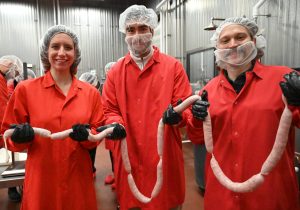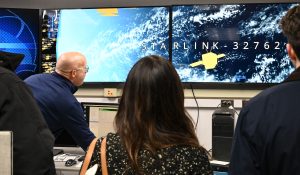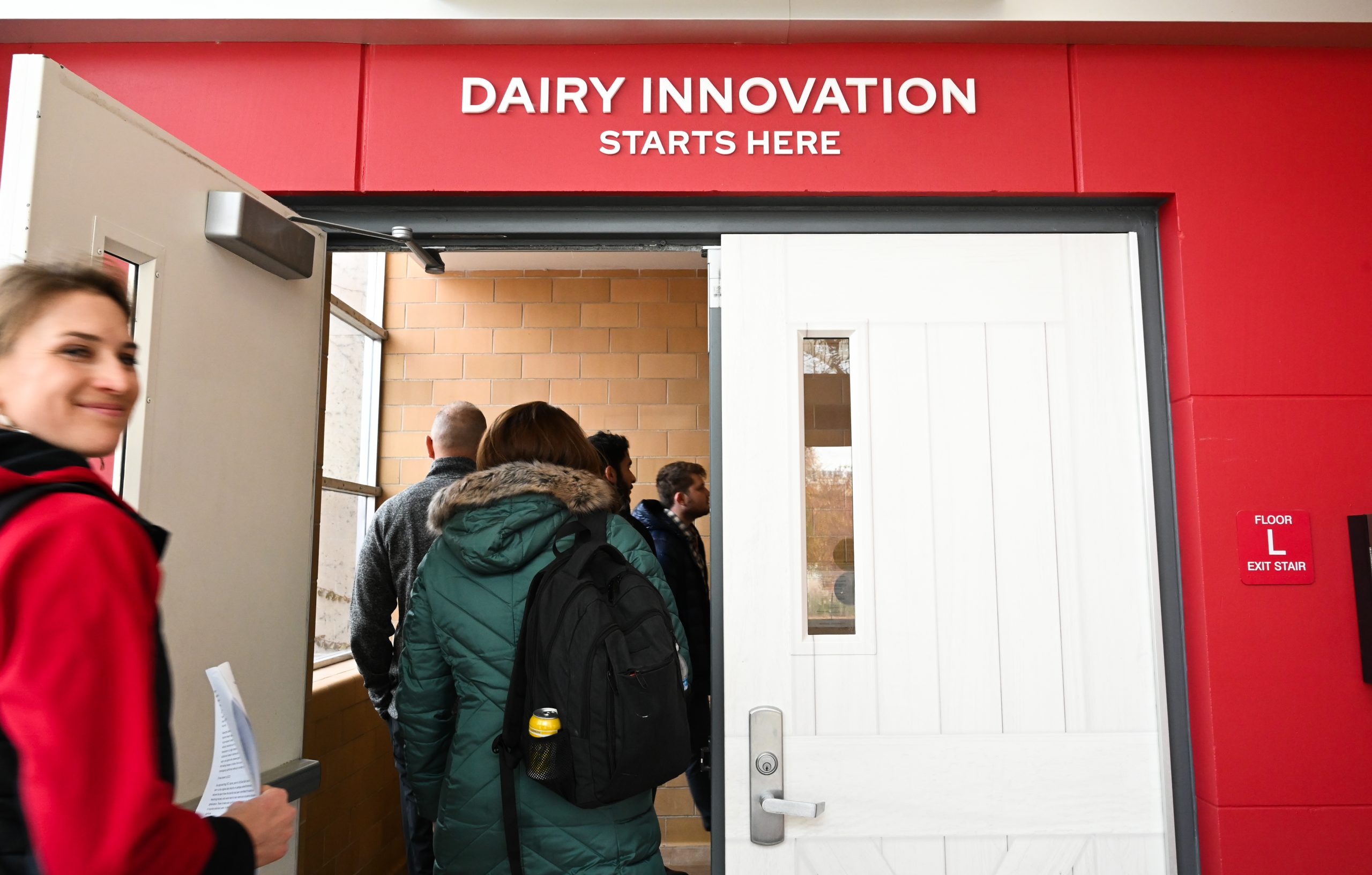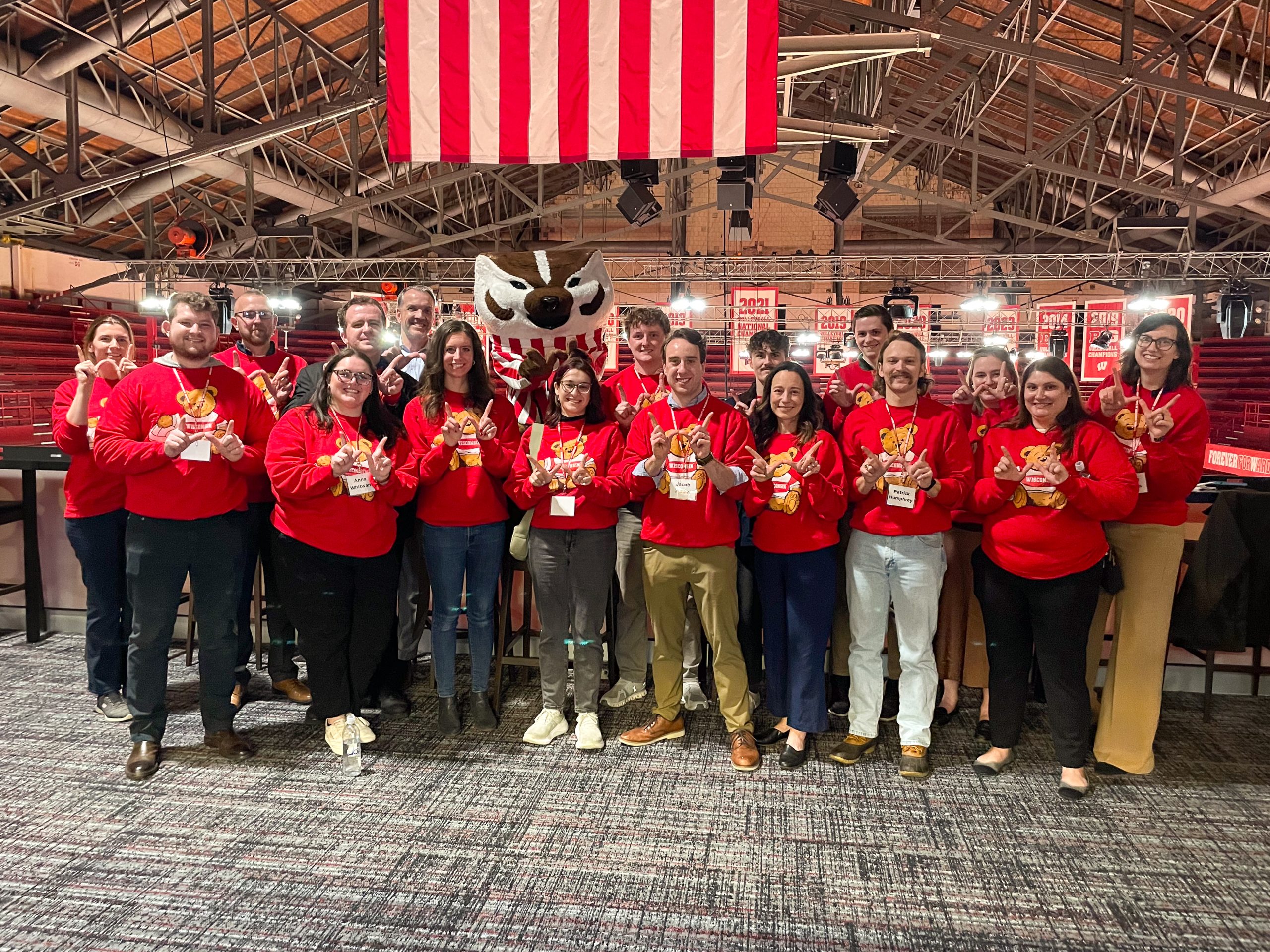
UW–Madison welcomed congressional staff for a three-day visit to campus, November 12 – 14, to see firsthand how national investments fuel discovery, improve lives, and strengthen Wisconsin’s economy. With federal research funding facing new uncertainty, the Office of Federal Relations provided an up-close look at how agency-backed projects support the state’s key industries.
More than a dozen staff from Wisconsin’s federal delegation, representing nearly every House and Senate member, met with faculty, students, and local partners whose work depends on federal support.
“We appreciated how the delegation showed up. They were curious, engaged, and ready to participate. Their commitment to Wisconsin really shows,” noted Laura Phillips, UW–Madison’s director of congressional affairs.

Each stop on campus demonstrated how national investments translate into essential services and underscored what’s at stake if those investments decline. Examples included severe weather forecasting, made possible by satellite data analyzed by the Space Science and Engineering Center (SSEC) and the Cooperative Institute for Meteorological Satellite Studies CIMSS; advanced helmets and protective equipment through the PANTHER collaboration for applications ranging from military defense, construction and winter sports; antibiotic discovery to address our global health crisis of drug resistant infections; and safe food products developed by UW–Madison’s Meat Science and Animal Biologics team.
The Wisconsin Idea in Action
The Wisconsin Idea was evident at every stop, showing up in the statewide tools, technology, and services the delegation saw across campus.
“Knowing not just how many Wisconsin students are benefiting, but that the work of the university is so impactful in the state and in the country is really impressive,” said Julia Mikota, Legislative Counsel for Senator Ron Johnson.

At the Atmospheric and Oceanic Sciences building, staffers learned about Wisconet, a statewide network of weather and soil-monitoring stations that provides real-time data to farmers and emergency managers. These systems help communities prepare for severe weather and support farmers facing repeated heavy rainfall in recent seasons. It’s a clear example of federal research dollars becoming practical tools for Wisconsinites.
The group also explored how NIH-backed medical research leads to better outcomes for Wisconsin patients, whether they live in Milwaukee or a rural community, hours away from a major hospital. Advances in cancer treatment and radiotherapy, for instance, reach families across the state and country. Like Wisconet, these breakthroughs embody the Wisconsin Idea: work at UW–Madison directly serves the people of the state.
Research That Powers Wisconsin’s Industries
Another realization emerged during the visit: research dollars don’t stay inside the labs on campus. They power Wisconsin’s major industries, including dairy, agriculture and aquaculture, healthcare, transportation, athletics, engineering, robotics, and more.

At a stop in the Dairy Cattle Center, researchers from Research Animal Resources and Compliance, the College of Agricultural and Life Sciences, and the School of Veterinary Medicine highlighted how federally supported dairy and animal health programs help farmers track emerging livestock diseases and improve herd efficiencies. These projects help producers adapt to changing conditions and protect the state’s signature industry.
This work is part of an even broader economic engine. For every $1 invested in UW-Madison, the university generates $26 for Wisconsin’s economy. NIH funding ripples into local hospitals. Engineering dollars from the National Science Foundation grow academic programs and attract industry partnerships. These relationships create skilled talent pipelines, launch new technologies and businesses, and keep Wisconsin competitive in national and global markets.
AI Transforming Research Across Disciplines
A forward-looking theme throughout the visit was the integration of artificial intelligence into research and data analysis. AI is now accelerating discoveries across fields like biomedical science, atmospheric modeling, agriculture, and engineering.
From dairy science to the Tiny Earth antibiotic discovery program, researchers demonstrated how AI tools help them analyze massive datasets and bring forward new solutions faster than ever imagined. These advances show how federal investments drive not just today’s research, but the next generation of innovation that will shape Wisconsin’s future industries and workforce.
Across every conversation, one takeaway resonated: federal funding is critical to Wisconsin’s future. It fuels discovery, strengthens our workforce, and supports local industries and the economy.
To learn more, visit UW-Madison’s research hub: https://news.wisc.edu/research-impact/
